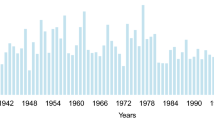Abstract
Water is one of the crucial resources for local livelihoods. Nowadays challenge of accessing to sufficient quantity and good quality for various activities: agriculture, ecosystem, domestic supply and recreation pose a major threat to security issue. Impact of climate change on water resources has been evidenced through intensification of changing hydrological cycle, which will entail more frequent and intense precipitation as well as longer dry spell periods. Although many stakeholders have increased awareness in climate change threat to water resources in the river basin, it is critical not to lose sight of the impacts of human activities on water resources. The effect of anthropogenic intervention is very difficult to separate from those of climate variations and need to be integrated into water resource assessment by means of holistic approach.
Climate change will have significant impact on agriculture in term of water availability for growing crop, crop productivity, and farming practice. Agricultural water management under climate change era is becoming increasingly complex and needs to consider socioeconomic change. This paper aims to assess impact of climate change on agricultural water for rice farming in Tha Chin river basin by raising Suphan Buri province as a case study. Climate projection in 2050 and 2070 reveals a slightly increase in temperature and precipitation. Suitability area for rice farming has been assessed by EcoCrop model by using the projected climate in 2050 as input. Two land use scenarios in 2050 will be projected by using business as usual (BAU) and green growth scenarios (GGC). Result reveals that GGC scenario tends to promote sufficient water supply. It is surprising that the largest area under rice cultivation nowadays is not suitable for rice farming in 2050. There is also increase in water demand due to rapid urban expansion, and it can possibly pose a threat to agricultural sector. Adjustment of agricultural plans and policies, building local capacity, and crop diversification are example of adaptation to build agricultural water resilience.
Similar content being viewed by others
References
Asian Development Bank (2009) The economics of climate change in Southeast Asia: a regional review. Asian Development Bank, Manila
Berke P, Cooper J, Aminto M, Grabich S, Horney J (2015) Adaptive planning for disaster recovery and resiliency: an evaluation of 87 local recovery plans in eight states. J Am Plan Assoc 80(4):310–323
Bryngelsson D, Wirsenius S, Hedenus F, Sonesson U (2016) How can the EU climate targets be met? A combined analysis of technological and demand-side changes in food and agriculture. Food Policy 59:162–164
Mu Q, Zhao M, Kimball J, McDowell NG, Running SW (2013) A remotely sensed global terrestrial drought severity index. Bull Am Meteorol Soc 94:83–98
Nordgren J, Stults M, Meerow S (2015) Supporting local climate change adaptation: where we are and where we need to go. Environ Sci Policy 66:344–352
Stocker TF, Qin D, Plattner G-K, Tignor M, Allen SK, Boschung J, Nauels A, Xia Y, Midgley PM (2013) Climate change 2013: the physical science basis. Contribution of Working Group I to the Fifth Assessment Report of the Intergovernmental Panel on Climate Change. Cambridge University Press, Cambridge, UK/New York
Yongdeng L, Hailin Z, Fu C, Linbo Z (2016) How rural land use management facilitates drought risk adaptation in a changing climate – a case study in arid northern China. Sci Total Environ 550:192–199
Acknowledgments
This work was supported by the National Research Council of Thailand (NRCT).
Author information
Authors and Affiliations
Editor information
Editors and Affiliations
Section Editor information
Rights and permissions
Copyright information
© 2018 Springer International Publishing AG
About this entry
Cite this entry
Monprapussorn, S. (2018). Impact of Climate Change and Land Use Change Scenarios on Water Resources in Tha Chin River Basin: A Case Study of Suphan Buri Province, Thailand. In: Hussain, C. (eds) Handbook of Environmental Materials Management. Springer, Cham. https://doi.org/10.1007/978-3-319-58538-3_141-1
Download citation
DOI: https://doi.org/10.1007/978-3-319-58538-3_141-1
Received:
Accepted:
Published:
Publisher Name: Springer, Cham
Print ISBN: 978-3-319-58538-3
Online ISBN: 978-3-319-58538-3
eBook Packages: Springer Reference Chemistry and Mat. ScienceReference Module Physical and Materials ScienceReference Module Chemistry, Materials and Physics




